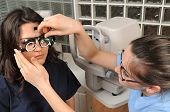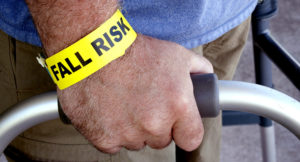Aging eyes and common vision problems – Check out the common eye diseases and eye disorders in older adults and elderly including Cataract and Glaucoma
Aging eyes and common vision problems !
What happens to your eyes as you grow older :
The vitreous liquid that fills the eyes changes in color and density, causing your vision to dim and colors to appear less bright. Your tears change causing dry eyes. The pupils get smaller and don’t move as fast making it difficult to adjust to lighting changes.
What is Cataract ? Cataract treatment and myths about Cataract
Cataracts are a gradual clouding of the normal lens inside the eyes, reducing vision. You know if its developing if you feel glare, reduced night vision, halos around lights, double vision in one eye, temporarily improved near vision (which you erroneously consider a good sign). Your ophthalmologist can detect it.
Cataract treatment:
The cataract is removed by breaking up the lens by ultrasound in a procedure called phacoemulsification, which lasts for less than an hour. An intraocular lens is inserted via a incision, which becomes a permanent part of your eye. The lens can be mono focal (one power) which is generally designed to focus on the distance, and you may need reading glasses.
Multi focal lenses work like multi focal glasses. There are different inbuilt powers for distance, intermediate and near vision. Post op problems include glare and imperfect night vision. The lens can be UV absorbent too, so you don’t need sunglasses. You can return home within an hour and be back to your routine within a few days.
Common myths about cataracts:
It’s not true that cataracts are caused by reading, sewing, too much computer or TV. Limiting your usual activity will not slow down the progression. Also, Cataracts cannot be removed by laser. No such device has been invented. However after cataract surgery, a specific membrane can become cloudy, which can be opened out with cataract surgery.
More aging eyes and common vision problems explained !
What is Glaucoma ? Glaucoma treatment and myths about Glaucoma
Glaucoma is a build up of fluid pressure in the eye which can lead from sight loss to total blindness. It happens when aqueous humour which usually exits through a drainage system, builds up, after 60. There are no overt symptoms until your sight is affected, except perhaps n agonizing pain in the eye and then loss of peripheral vision.
That’s why it is important to test yourself yearly after 60 specially if there is a family history of glaucoma. An intraocular pressure test, Gonioscopy, Optical Colene Tomography and visual field test can identify it.
Glaucoma treatment :
In most cases it can be stabilized with eye drops which decrease the fluid pressure within the eye or increase the drainage of fluid outside the eye. Laser trabeculoplasty widens the channels that drain fluid. Also, a small shunt can be implanted to facilitate draining.
Common myths about Glaucoma:
It’s not true that you have glaucoma if your Intra Ocular Pressure is increased. It only means that you are at risk for glaucoma. Whether you get it, depends on the level of pressure that your optic nerve can tolerate without being damaged-which is different for each person.
Diabetic retinopathy
This disorder is a complication of diabetes. It occurs when small blood vessels stop feeding the retina properly. In the early stages of diabetic retinopathy, the blood vessels may leak fluid, causing blurred vision or no symptoms at all. As the disease advances, you may notice floaters, blind spots or cloudiness of vision. New blood vessels may grow and bleed into the center of the eye, causing serious vision loss or blindness.
For diabetic swelling of the retina, drug injections and laser may improve or preserve vision. In most advanced cases, laser treatment can prevent blindness. It is very important that people with diabetes have an eye exam with pupil dilation every year. Very importantly, the likelihood of diabetic retinopathy is significantly decreased with good blood sugar control.
Conjunctivitis
Conjunctivitis happens when the tissue that lines the eyelids and covers the sclera becomes inflamed. It is sometimes called “pink eye” or “red eye.” It can cause redness, itching, burning, tearing, or a feeling of something in the eye. Conjunctivitis occurs in people of all ages and can be caused by infection, exposure to chemicals and irritants, or allergies.
Temporal arteritis
Temporal arteritis causes the arteries in the temple area of the forehead, as well as other areas of the body, to become inflamed and possibly obstructed. It can begin with a severe headache, pain when chewing, and tenderness in the temple area. Patients may have a chronic fever, shoulder or hip weakness, and scalp tenderness. It may be followed by sudden vision loss, which is usually permanent. It is more commonly diagnosed in elderly women. People with any of these symptoms should see their physician.
Also note that once sight has been lost, it cannot be restored, so early diagnosis and treatment of the common eye problems in old age are absolutely essential.
RELATED TOPICS
How to get travel insurance for Schengen visa
Health insurance companies in UK
How does HIV spread in the body
Best health insurance for senior citizens in India


